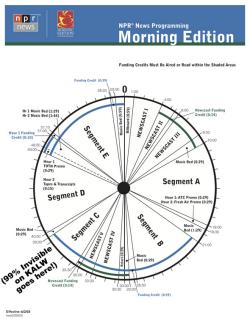The Broadcast Clock, the Diagram That Rules Public Radio
By far the best design podcast around—and one of the best podcasts, period—is Roman Mars’ 99% Invisible. On it he covers design questions large and small, from his fascination with rebar to the history of slot machines to the great Los Angeles Red Car conspiracy. Here at the Eye, we will be cross-posting his new episodes so you can check them out, and we’ll also host excerpts from his podcast’s terrific blog, which offers complementary visuals for each episode.
His most recent show, about the image that rules public radio—the broadcast clock—can be played below. Or keep reading to learn more about the tool that keeps Robert Siegel and his brethren in check.
There’s a term that epitomizes what we radio producers aspire to create: the “driveway moment.” It’s when a story is so good that you can’t leave your car. Inside of a driveway moment, time becomes elastic—you could be staring straight at a clock for the entire duration of the story, but for that length of time, the clock has no power over you.
But, ironically, inside the machinery of public radio—the industry that creates driveway moments—the clock rules all.
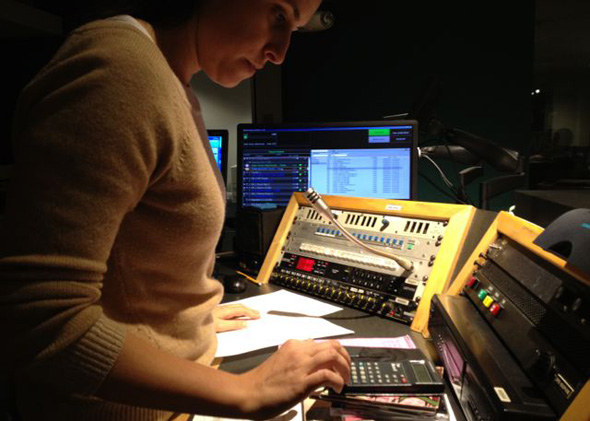
Courtesy of Julia Barton
At NPR’s studios in Washington, D.C., there are clocks everywhere. Big red digital clocks, huge round analog clocks. There’s even special software and time calculators, where 60 plus 60 equals 2’00.
But each show also has a virtual “clock,” a set template, from which the show almost never varies. Every show that broadcasts—or aspires to broadcast—in the public radio system has a clock. This is the All Things Considered broadcast clock, which NPR and stations across the country refer to on a daily basis:
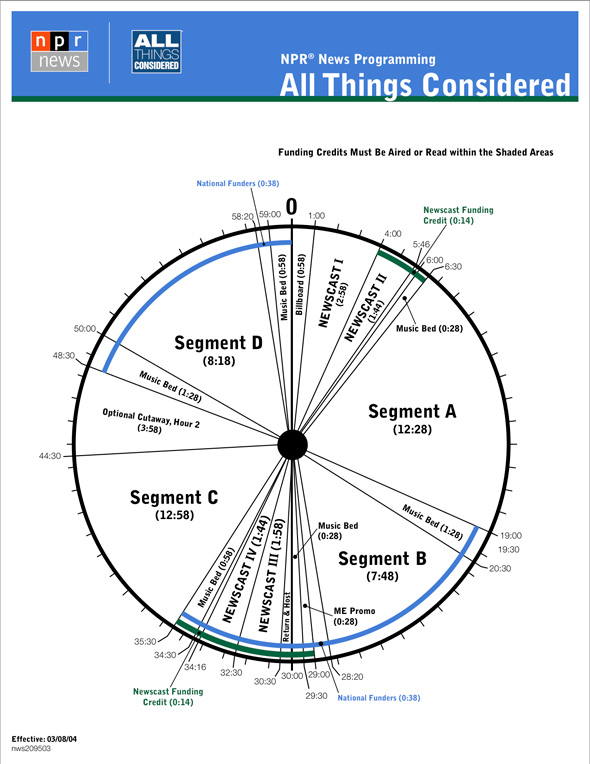
Courtesy of NPR
It’s actually a pretty cool piece of visual design, but one that functions best when it is never seen. This template is used twice every weekday: All Things Considered Hour 1, from 4:00:00 p.m. through 4:59:59 p.m. ET, and then for All Things Considered Hour 2, from 5:00:00 p.m. through 5:59:59 p.m. ET.
Here’s how it works: At the “top” of the hour, there is a 59-second “billboard,” which announces what’s going up in the program. Then there’s five minutes for the newscast, which is itself divided into two segments (“Newscast I” and “Newscast II”). Then there are the “blocks”—A, B, C, and D—that are where the stories and interviews (or “two-ways”) live.
Segments can’t run long by even a second because most of the local stations are automated to cut off the national program where the clock says they can. These times—the dividers between the sections on the clock—are called posts. You have to hit the post. Nothing can go wrong.
Though, of course, things go wrong every day.
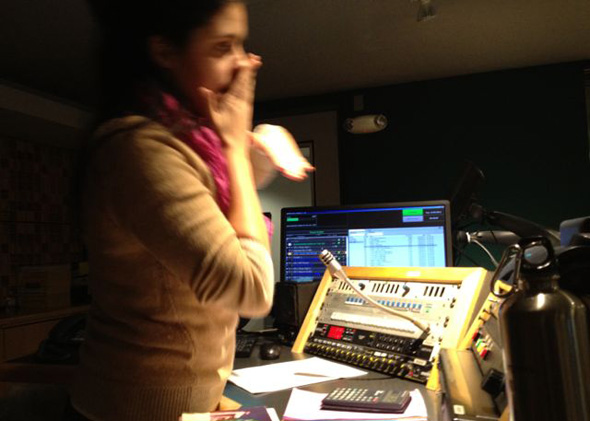
Courtesy of Julia Barton
Taking care of the clock is so ingrained in the director’s psyche that a common side effect of the job is waking up in the middle of the night fearing that you’ve blown the post—these are called “director’s dreams.” To cope with the anxiety, All Things Considered directors make their own cheat sheets to help them memorize every queue of every hour of broadcast. Visit any studio that does a regular live feed with a broadcast clock and you’ll likely find a cheat sheet somewhere in the studio.
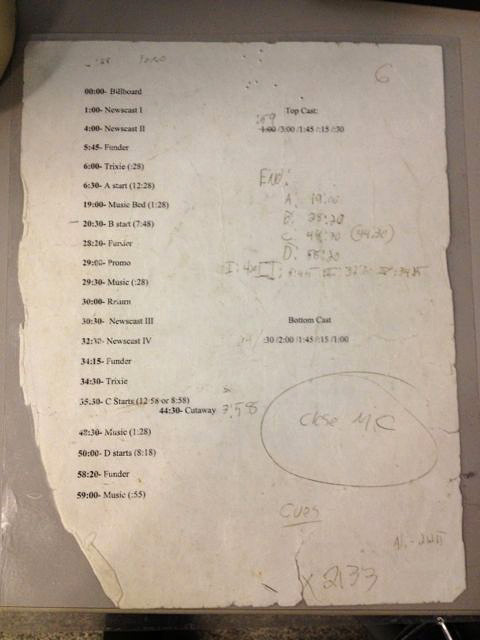
Courtesy of Julia Barton
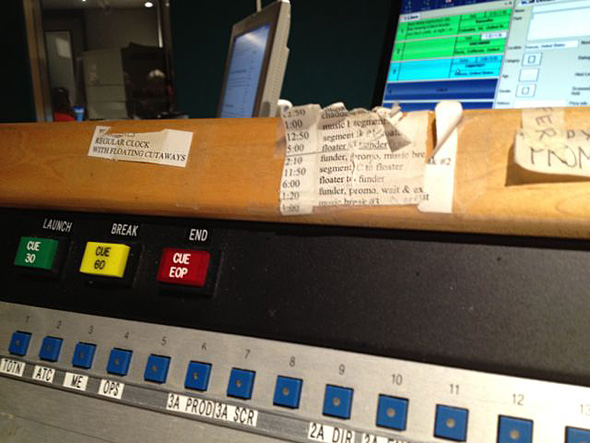
Courtesy of Julia Barton
When NPR began in the early 1970s, show clocks were much less regimented—or they didn’t have clocks at all.
One of the early champions against the fixed clock was Bill Siemering, a founder of NPR who helped design the network’s overall sound. He came up with the name All Things Considered (original title: A Daily Identifiable Product).
Siemering liked a clock that was more free-form, because it allowed for spontaneity and unpredictability. But spontaneous and unpredictable does not always make for compelling radio. Done wrong, you wind up with laughably bad “Schweddy Balls”–grade public radio.
To learn more about the clocks that rule public radio, read the rest of the 99% Invisible post or listen to the show. 99% Invisible is distributed by PRX.

